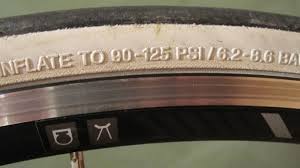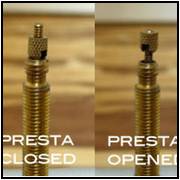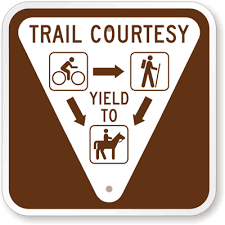ABC Quick Check: A is for Air
The “ABC Quick Check” is a phrase to help you remember how to check your bike for safety and mechanical soundness. In this note, we introduce the first letter:
A is for Air
If you’re getting a bike back out of storage after more than a few months, it will almost certainly need air in the tires. Riding on under-inflated tires can damage your wheel, and compromise safe handling. Also, flatter tires offer more resistance to pedaling, so you’ll have a better experience on properly filled tires, and your energy will be used more efficiently. So even if the tires are not completely and obviously flat, still check them.
Basic advice: Make sure the tires feel hard. If not, fill them up until they do.
To be more precise, you can use a standard tire gauge, or a bike pump with a gauge, to check the pressure. The recommended range is printed on the sidewall of the tire, measured in “PSI”, Pounds per Square Inch. There is a wide range of pressures for different tires, ranging from 30 to over 100.
 |
| INFLATE TO 90-125 PSI |
How to work the pump
Most bicycle pumps have a lever that you need to move into position to get a good seal to pump the tire. Secure the nozzle over the valve and pull the lever up. As you work the pump, you should be able to feel the air going into the tire. If there is too much resistance and hissing, you probably don’t have a good fit. Remove it and try again.
 |
| Nozzle securely attached to the valve stem |
Alternatives to bike pumps
You may be tempted to take your bike to the nearest automobile service station for air. Be very careful using a power air pump on your bike! They are designed for car tires, and it's very easy to overinflate bicycle tires with them. If you must, go slowly and check the pressure with a gauge.
Small cartridges of CO2 are available for serious cyclists in a hurry to fix a flat in the middle of a ride. They can be acquired at most local bike shops, or online. (You can also get more compact pumps that mount to your bike frame to carry with you.)
Small cartridges of CO2 are available for serious cyclists in a hurry to fix a flat in the middle of a ride. They can be acquired at most local bike shops, or online. (You can also get more compact pumps that mount to your bike frame to carry with you.)
Types of valves
 |
| Presta (left) and Schrader (right) valves |
Schrader (right) is the more common type among everyday bikes and mountain bikes, while Presta is more often used on road bikes and higher end bikes. (Why?) Some bike pumps will only work on one type, others can work on both.
If you have a Presta valve, there is one more thing you need to know. The top part of the valve screws down tight to hold the air better, and must be unscrewed to let air in.
Turn the top of the valve counterclockwise to loosen it, then after you've pumped it, turn it clockwise again to tighten it down.
If your tires do not hold air, you probably need to patch or swap out the inner tube. That will be covered in a future post, or take it to your local bike shop for service.
Pro tip: There is a further way that Presta valves can lose air. The valve core can be removed by unscrewing it, twisting the top of the valve just under the part that you open or close. Therefore, to hold air, that part must be screwed down tightly. If it is loose, air can leak out slowly, causing a flat overnight or even gradually during a longer ride. (Yes, I learned this the hard way.) So take care to make sure this is tight!
Always put the valve cap back on the valve after pumping the tire, to keep it clean and dry.
Pro tip: There is a further way that Presta valves can lose air. The valve core can be removed by unscrewing it, twisting the top of the valve just under the part that you open or close. Therefore, to hold air, that part must be screwed down tightly. If it is loose, air can leak out slowly, causing a flat overnight or even gradually during a longer ride. (Yes, I learned this the hard way.) So take care to make sure this is tight!
Always put the valve cap back on the valve after pumping the tire, to keep it clean and dry.
Why This Blog? Next Post: B is for Brakes >>>





Comments
Post a Comment